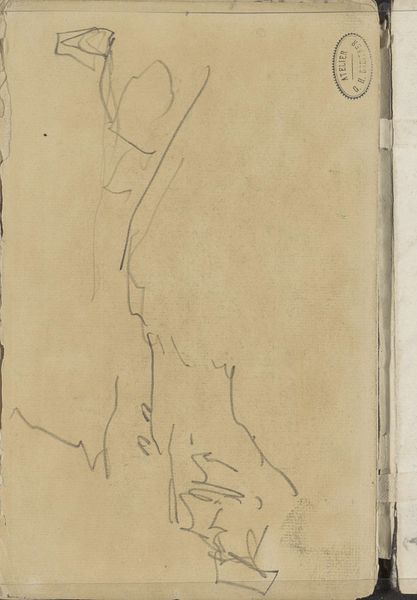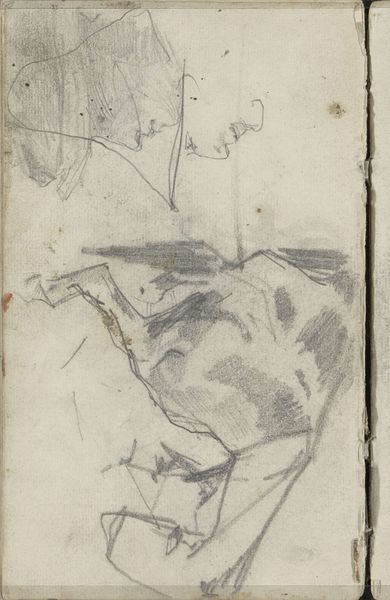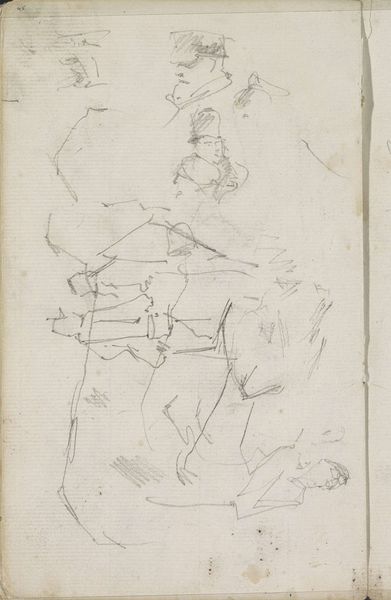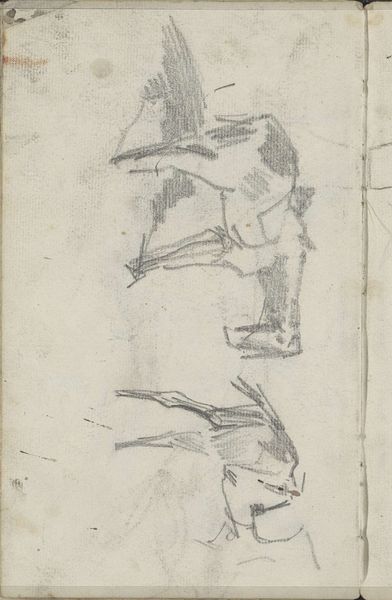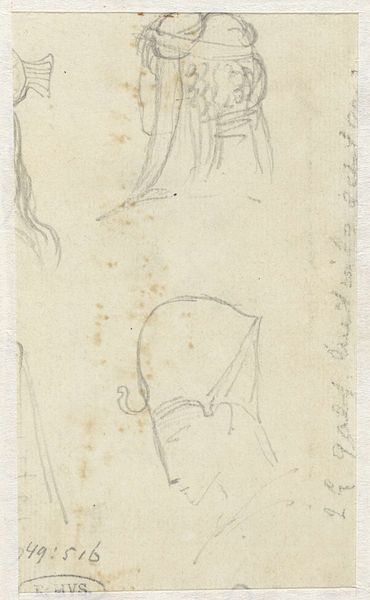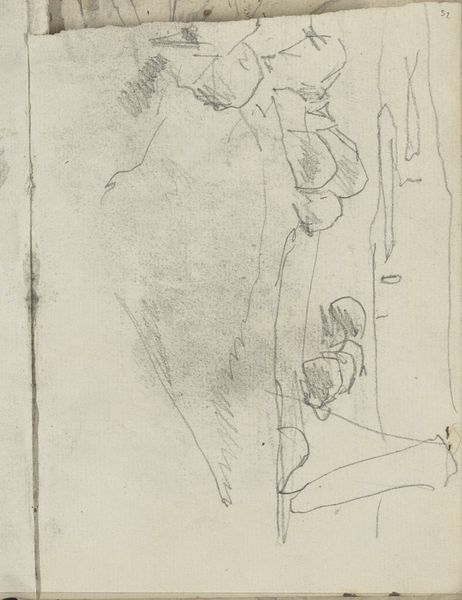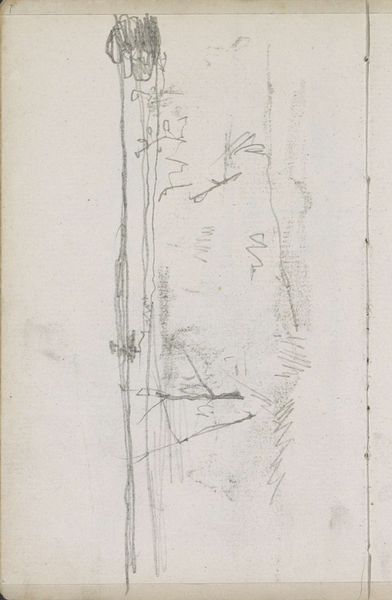
drawing, pencil, graphite
#
drawing
#
toned paper
#
light pencil work
#
quirky sketch
#
impressionism
#
pencil sketch
#
sketch book
#
landscape
#
figuration
#
personal sketchbook
#
sketchwork
#
pencil
#
graphite
#
sketchbook drawing
#
genre-painting
#
storyboard and sketchbook work
#
sketchbook art
Copyright: Rijks Museum: Open Domain
Curator: Oh, my first thought? Controlled chaos. Editor: Here we have "Groepen figuren en een paard-en-wagen," a graphite drawing by George Hendrik Breitner, dating from around 1880 to 1882. It’s currently part of the Rijksmuseum collection. What draws you to describe it that way? Curator: There’s something frenetic, urgent even, about these lines. Like catching snippets of a story. Quick, before it vanishes. A memory trying to stay afloat. It looks like the artist's sketchbook—fleeting, ethereal thoughts—something only intended for his eyes only. Editor: Exactly! Breitner was known for capturing everyday street scenes, particularly in Amsterdam. This drawing, in its sketchy quality, provides insight into his working process, how he observed and documented the bustling urban environment around him. Consider the horse-drawn cart; it seems to represent industrializing cities, filled with chaos, and in flux. Curator: It also feels very personal, almost like eavesdropping on a conversation, but in image form. I mean, it’s rough, isn't it? Nothing is nailed down. But perhaps that is its point. Editor: It’s definitely a looser style, embracing a certain immediacy reminiscent of Impressionism. And its accessibility cannot be dismissed! Drawings, due to their private nature, weren’t meant for wider audiences, yet institutions and their political role brought them out to us, reshuffling public roles in art. What might have been private becomes a public thing. Curator: Absolutely, you're giving us the artist's initial gut reaction. The germ of an idea. But there's also this loneliness. Are these figures separate entities or something bigger? Editor: Well, perhaps that isolation reflects Breitner's relationship to the society he depicts. While he found beauty and inspiration in urban life, there's also often a sense of detachment in his work, as if he were always an observer. I can imagine a bit of cynicism given what we know about the artist! Curator: Hmmm…perhaps you are on to something here! Ultimately, though, what fascinates me is the open-endedness. What would this work eventually become? It's like peeking into a chrysalis. Editor: Yes, it reveals so much more than perhaps the finished artwork allows, an urban study, if you will. A historical artefact, revealing industrial Amsterdam in flux. Curator: The drawing carries with it an honesty, unburdened from expectation, truly liberating! Editor: Precisely, it encapsulates the vibrancy and immediacy of Breitner's perspective during the 1880s!
Comments
No comments
Be the first to comment and join the conversation on the ultimate creative platform.
